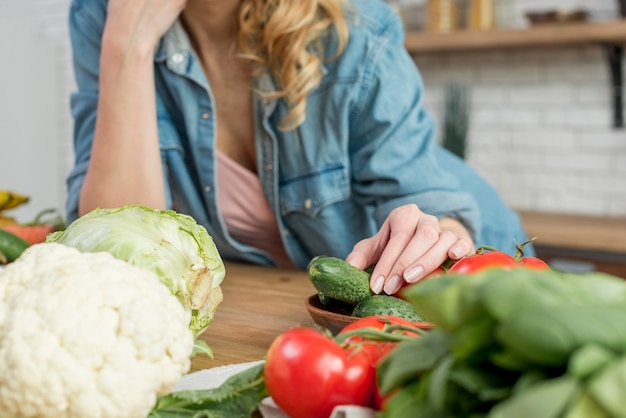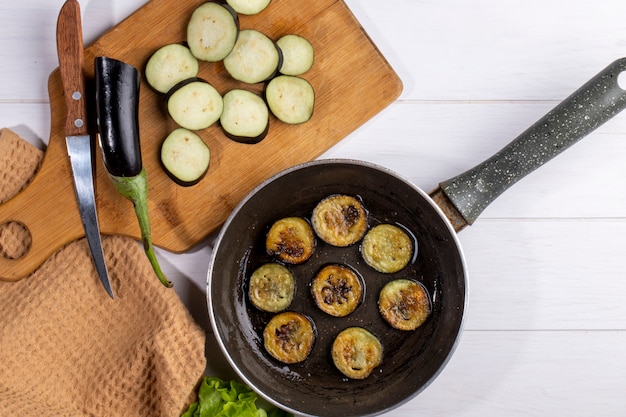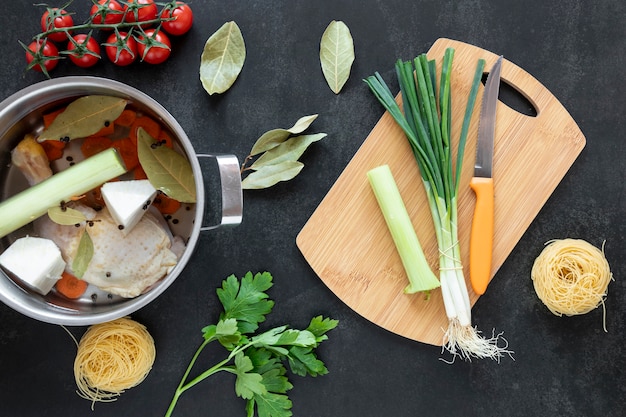I'll be honest, I wasn't always a fan of turnip greens. Growing up, they were a bit of a dreaded side dish, cooked to a mushy, over-boiled oblivion. But then, I discovered the magic of properly cooked turnip greens, and let me tell you, it was a revelation. They can be absolutely delicious, bursting with flavour and texture, a real star of the show on your dinner table. So, join me on a journey to conquer the art of cooking perfect turnip greens. We'll explore everything from choosing the right greens to mastering different cooking methods, unlocking the full potential of this humble vegetable.
(Part 1) Picking the Perfect Greens: A Foundation for Flavor

You've got to start with the right ingredients, haven't you? A good turnip green is the foundation of a fantastic dish, so let's get this right.
Choosing the Greens: A Guide to Picking the Best
When you're at the market, look for greens that are bright green, with crisp, tender leaves. Imagine the leaves as a canvas for your culinary masterpiece! You want them to be lively and vibrant, not limp and dull. Avoid any that are wilted, yellowed, or have brown spots – that's a sign they've been sitting around too long, and their flavour will be compromised. A good tip is to gently rub a leaf between your fingers. It should feel firm and crisp, not mushy or limp.
How to Store Turnip Greens: Keeping Them Fresh and Ready
Once you've got your hands on a bunch of beautiful greens, the next step is storage. Wrap them loosely in a paper towel and then place them in a plastic bag. This helps to absorb any excess moisture and prevent wilting. Put them in the crisper drawer of your fridge, and they'll keep for up to a week. Just make sure to check on them regularly, and if they start to look a bit sad, it's best to use them sooner rather than later. The crisper drawer offers a cool, humid environment that helps to keep them fresh for longer.
(Part 2) Prep Work: Getting Ready for Culinary Success

Now, before you even think about firing up the stove, there's some essential prep work to do. This isn't about being fussy, but it's about making sure your greens are ready to cook beautifully. Think of it as preparing the stage for your culinary performance.
1. Cleaning the Greens: A Rinse for a Clean Taste
The first thing you'll want to do is give those greens a good wash. Fill a large bowl with cold water and add the greens. Swish them around gently to loosen any dirt or debris. Don't be afraid to get your hands in there! You're essentially giving them a refreshing bath. Drain the water, refill the bowl, and repeat the process until the water runs clear. This ensures that all the dirt is removed, leaving you with clean, fresh greens.
2. Trimming the Greens: Removing the Tough Bits
Now, it's time to trim those greens. Start by cutting off the tough ends of the stalks, usually about an inch or so. This part of the stalk is tough and fibrous and doesn't cook well. Then, separate the leaves from the stalks. You can use the stalks for making a delicious soup or broth, but for our turnip greens dish, we'll be focusing on the leaves. These stalks are full of flavour and add a wonderful depth to soups and broths.
3. Chopping the Greens: Making Them easy to cook
For a more manageable size and to ensure even cooking, chop those greens into roughly 1-inch pieces. No need to be too precise, just get them into bite-sized pieces. You'll want a nice mix of leafy greens and stems, but feel free to leave some of the thicker stems aside for your soup or broth, if you'd like. Consistent chopping helps to ensure even cooking, preventing some parts from being overcooked while others remain undercooked.
(Part 3) The Cooking Methods: Unveiling the Flavour

Right, now comes the fun part – cooking those greens to perfection. There are a few different ways to do this, each with its own unique flavour and texture. Think of these methods as your culinary toolbox, each tool offering a different approach to achieving a delicious result.
1. The Classic Method: Boiling - A Simple and Tried-and-True Approach
This is the tried and true method, the one most of us grew up with. Boiling brings out the bright, vibrant green colour of the greens, and it's a simple technique that everyone can master.
Boiling Instructions: Step-by-Step to Perfect Greens
- Fill a large pot with water and bring it to a rolling boil. Add a pinch of salt to the water - it helps enhance the flavour of the greens. Salt is a flavour enhancer, and it helps to bring out the natural sweetness of the greens.
- Add the chopped greens to the boiling water and cook until they're tender but still have a slight bite. This usually takes about 5-10 minutes, depending on the thickness of the greens. You don't want them to be mushy, so keep an eye on them and taste them as they cook.
- Drain the greens in a colander and give them a good squeeze to get rid of any excess water. This prevents the greens from being watery and allows them to absorb other flavours.
2. The Quick and Easy Method: Sautéing - A Dash of Smoky Flavor
Sautéing is a great way to cook turnip greens quickly and easily, preserving their vibrant green colour and adding a hint of smoky flavour.
Sautéing Instructions: Simplicity and Flavor in a Pan
- Heat a large skillet or pan over medium heat. Add a tablespoon or two of olive oil or your favourite cooking oil. The heat of the pan helps to bring out the natural flavors of the greens.
- Add the chopped greens to the hot pan and sauté, stirring occasionally, until they're wilted and tender, about 5-7 minutes. You want to hear a gentle sizzling sound as the greens cook, which indicates they are releasing their moisture.
- Season with salt, pepper, and any other spices you like.
3. The Flavorful Method: Steaming - Gentle Cooking for a Delicate Touch
Steaming is a gentle cooking method that preserves the nutrients and flavour of the greens. It's also a great option if you're looking for a healthier way to cook.
Steaming Instructions: The Art of Light Cooking
- Fill a steamer basket with water and bring it to a boil. The steam helps to cook the greens evenly and gently.
- Add the chopped greens to the steamer basket and cover the pot. Steam until the greens are tender, about 5-8 minutes. The steaming process allows the greens to retain their vibrant colour and delicate texture.
- Season with salt, pepper, and any other spices you like.
4. The Southern Delight: Braising - Slow and Low for Rich Flavors
Braising is a slow-cooking method that yields incredibly tender, flavourful greens, especially if you're a fan of a slightly smoky taste. It's also a great way to cook tough, older greens.
Braising Instructions: slow cooking for Depth of Flavor
- Heat a large pot or dutch oven over medium heat. Add a tablespoon or two of olive oil or your favourite cooking oil. The Dutch oven helps to trap the heat and moisture, ensuring the greens cook evenly and develop rich flavors.
- Add a diced onion to the pot and cook until softened. The onion adds a sweetness and depth to the dish.
- Add the chopped greens to the pot, along with a couple of cups of broth or water. Bring to a simmer, cover the pot, and cook until the greens are tender, about 30-45 minutes. The broth or water provides moisture and enhances the flavor of the greens.
- Season with salt, pepper, and any other spices you like.
(Part 4) Elevate the Flavour: Seasonings and Enhancements - The Art of Flavor Alchemy
Now, let's talk about adding that extra 'oomph' to your turnip greens. It's all about finding the perfect balance of flavours that complement the natural sweetness and earthiness of the greens. Think of this as creating a symphony of flavors, where each element plays a role in creating a harmonious whole.
1. The Classics: Salt and Pepper - The Foundation of Flavor
You can't go wrong with a good sprinkle of salt and pepper. Salt enhances the natural flavour of the greens, while pepper adds a bit of warmth and spice. Think of these as the basic notes in your culinary composition.
2. Adding Umami: Garlic, Onion, and Bacon - A Symphony of Savory
These are my go-to flavour enhancers for turnip greens. A few cloves of garlic, a diced onion, and some crispy bacon add a savoury depth and complexity that elevates the dish to a whole new level. You can add them to the pot while cooking, or use them to create a delicious sauce for the greens. These ingredients create a harmonious blend of savory notes that complement the earthy flavor of the greens.
3. A Touch of Sweetness: Sugar, Honey, or Molasses - Balancing the Bitter
Believe it or not, a touch of sweetness can really enhance the flavour of turnip greens. A teaspoon or two of sugar, honey, or molasses balances out the bitterness and brings out the natural sweetness of the greens. Think of this as a counterpoint to the bitter notes, creating a more balanced flavor profile.
4. A Burst of Brightness: Vinegar or Lemon Juice - A Tangy Twist
A splash of vinegar or lemon juice adds a tangy brightness that cuts through the richness of the greens. It's also a great way to add a bit of acidity, which balances out the flavours and makes the dish more complex. This element adds a refreshing and zesty quality, adding another layer to the flavor profile.
5. Spices to Explore: Cayenne Pepper, Hot Sauce, and Black Pepper - A Spicy Kick
If you're looking for a kick of heat, add a pinch of cayenne pepper or a few dashes of hot sauce. Or, use freshly ground black pepper to add a more earthy, intense flavour. These spices add a vibrant and exciting element, allowing you to personalize your dish to your liking.
(Part 5) Delicious Turnip Green Dishes: A Culinary Exploration
Now that you know all the basics, let's talk about some delicious ways to enjoy those perfectly cooked turnip greens. These are just a few ideas to spark your culinary imagination.
1. Classic southern turnip greens - A Timeless Tradition
A simple yet satisfying dish, classic Southern turnip greens are cooked with bacon, onion, garlic, and a touch of sugar or molasses. It's a comfort food that warms the soul and is perfect with a side of cornbread or rice. This dish embodies the essence of Southern cooking, with its comforting flavors and warm textures.
2. Turnip Greens with Smoked Sausage - A Smoky and Savory Delight
For a heartier dish, try turnip greens with smoked sausage. The smoky flavour of the sausage complements the earthiness of the greens beautifully. Serve this with a side of mashed potatoes or baked beans. This combination offers a balance of flavors, textures, and satisfying heartiness.
3. Creamy Turnip Greens - A Luxurious Twist
For a more luxurious twist, try creamy turnip greens. Simply add a dollop of heavy cream or sour cream to the cooked greens, and you'll have a rich and creamy dish that's perfect for a special occasion. This adds a creamy richness and elegance to the dish, transforming it into a culinary masterpiece.
4. Turnip Green Soup - A Hearty and Nourishing Comfort
Who knew turnip greens could be so versatile? You can use them to make a delicious soup, either on their own or combined with other vegetables like potatoes, carrots, and beans. This soup is a perfect example of how turnip greens can be incorporated into a variety of dishes, providing a flavorful and nourishing meal.
5. Turnip Green Salad - A Fresh and Unexpected Delight
Yes, you heard right! Turnip greens can be used in a salad for a unique and flavourful addition. Combine them with other greens, chopped vegetables, and a tangy vinaigrette for a refreshing salad. This unexpected combination offers a fresh and vibrant addition to your salad repertoire.
(Part 6) Top Tips from a Seasoned Cook - Wisdom from the Kitchen
Now, having cooked countless batches of turnip greens over the years, I've picked up a few tricks that I think might be helpful to you. These are the little secrets I've learned along the way, the things that make the difference between good and great turnip greens.
1. Don't Overcook Them - The Key to Tenderness, Not Mush
Turnip greens can go from tender and delicious to mushy and unpleasant in a flash. So, keep a close eye on them while they're cooking, and don't be afraid to take them off the heat a little early. They'll continue to cook a bit even after you've drained them. Overcooked greens lose their texture and flavor, so keep a watchful eye and taste them as they cook.
2. Don't Be Afraid to Experiment - Unlocking Your Culinary Creativity
Cooking is all about experimenting and finding what works best for you. Don't be afraid to try different cooking methods, seasonings, and ingredients. You might discover a new favourite way to cook turnip greens. The kitchen is your canvas, and experimentation is the brush that allows you to create your own culinary masterpiece.
3. Taste as You Go - The Art of Fine-Tuning
As your greens are cooking, taste them periodically to make sure they're cooked to your liking. You can adjust the seasoning, add more liquid, or cook them a bit longer, if necessary. This allows you to customize the dish to your taste preferences and ensure it meets your expectations.
4. Save the Stalks - A Hidden Culinary Treasure
As I mentioned earlier, don't throw away those tough stalks! You can use them to make a delicious soup or broth. They'll add a rich flavour to your soup, and they're also a great source of nutrients. Waste not, want not! Don't discard those stalks, they can be used to add depth and flavor to soups and broths.
5. Enjoy the Leftovers - The Beauty of a Second Serving
Turnip greens are just as delicious the next day. You can reheat them on the stovetop or in the microwave. They also make a great addition to sandwiches or wraps. Leftovers provide a convenient and flavorful option for another meal.
(Part 7) Turnip Green Nutrition - A Bounty of Goodness
Not only are turnip greens delicious, they're also packed with nutrients. They're a good source of vitamins A, C, and K, as well as fibre, calcium, and iron. So, enjoy these tasty greens knowing you're getting a healthy dose of goodness with every bite. Eating turnip greens provides a nutritious and flavorful way to nourish your body.
(Part 8) FAQs - Addressing Your Questions
Now, let's answer some common questions about cooking turnip greens.
1. What do turnip greens taste like?
Turnip greens have a slightly bitter, earthy flavour that's similar to mustard greens or collard greens. They're also slightly sweet, thanks to their natural sugars. They offer a complex flavor profile that is both earthy and subtly sweet.
2. How can I get rid of the bitterness?
To reduce the bitterness of turnip greens, you can cook them longer, add a touch of sweetness like sugar or honey, or use a vinegar or lemon juice to balance out the flavour. These methods help to neutralize the bitterness and enhance the other flavors of the greens.
3. What can I substitute for turnip greens?
If you can't find turnip greens, you can substitute them with other leafy greens like collard greens, mustard greens, or kale. They all have a similar flavour profile and can be cooked in the same way. These greens offer a similar flavor and texture, making them suitable substitutes.
4. Can I freeze turnip greens?
Yes, you can freeze turnip greens. Blanch them for a few minutes in boiling water, then drain them and let them cool completely. Place them in a freezer-safe bag and freeze for up to 3 months. Freezing allows you to preserve the greens for later use, ensuring you have a supply on hand when needed.
5. How long can I keep cooked turnip greens?
Cooked turnip greens can be kept in the refrigerator for up to 4 days. Make sure to store them in an airtight container. This helps to keep the greens fresh and flavorful for longer.
And that's a wrap on our journey to perfect turnip greens! I hope you enjoyed the tips and tricks I shared. Now, go forth and cook up some delicious turnip greens. Your taste buds will thank you.
Everyone is watching

Corn on the Cob: The Ultimate Guide to Perfectly Cooked Ears
Healthy MealsAh, corn on the cob. Just the name evokes images of sunny days, barbecues, and that sweet, juicy flavour that ...

Perfect Pork Roast Oven Cooking Time: A Guide to Delicious Results
Healthy MealsThere's something truly satisfying about a perfectly roasted pork. The aroma alone is enough to make your mout...

Ham Cooking Time: How Long to Bake, Smoke, or Boil a Delicious Ham
Healthy MealsAh, ham. It's a classic, isn't it? A real crowd-pleaser, especially around holidays. And when done right, it'...

Scallops: The Ultimate Guide to Perfect Cooking
Healthy MealsAh, scallops. Those delicate, sweet, and utterly delicious morsels of the sea. They hold a special place in my...

Spaghetti Squash: The Ultimate Guide to Cooking and Serving
Healthy MealsRemember that time you saw spaghetti squash at the supermarket, looking all bumpy and strange, and thought, "W...
